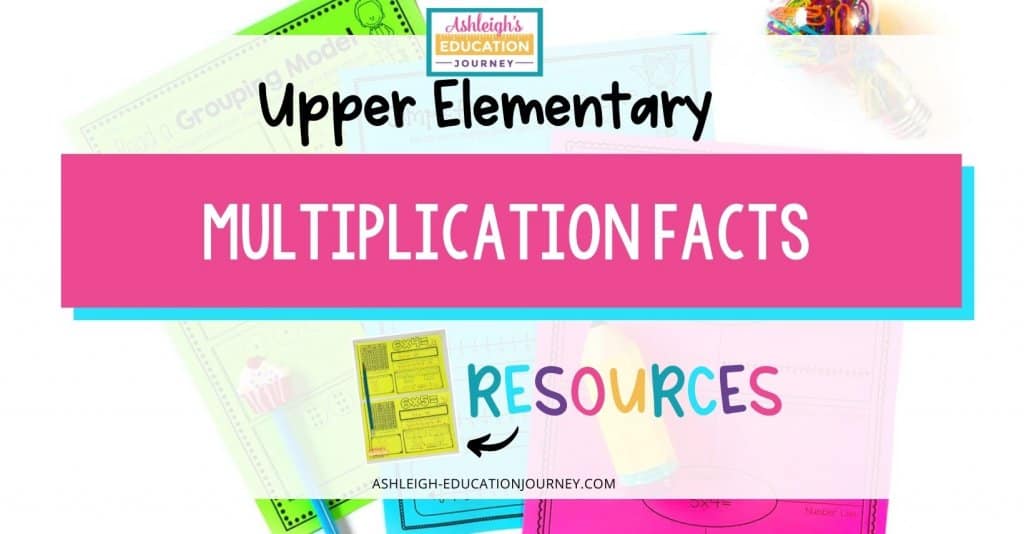
As a third and fourth grade teacher, multiplication facts are a huge part of my curriculum. While I absolutely believe in teaching for conceptual understanding and deep meaning, I also believe it is important for my students to know their multiplication facts with fluency. (I plan to write a new post sharing what fluency in math really means.) I want multiplication facts to be effortless and automatic for my students, so their focus can be geared toward problem solving and upper level math concepts, rather than basic computation. As a former fourth grade teacher, I also know how difficult fourth grade math (I can only image fifth and beyond) is when students did not know their multiplication facts. This blog post shares some of my ideas and strategies for teaching multiplication facts, as well as motivating students to learn their multiplication facts.
Practice
I do not teach a multiplication facts unit, but I do teach a unit on the concept of multiplication and multiplication strategies, and you can see some of those instructional lessons here. First, I begin with a grouping model, where students build models of groups with a certain number in each group. I also spend a great deal of time teaching arrays and repeated addition, and a little time teaching multiplication on a number line. A lot of the practice I use here is from my No Prep Multiplication pack. It’s important to keep in mind that not all students need this extra practice, but I’ve found it particularly beneficial for students with short term and long term memory issues. I use these for extra practice, not my actual math lesson or instruction.
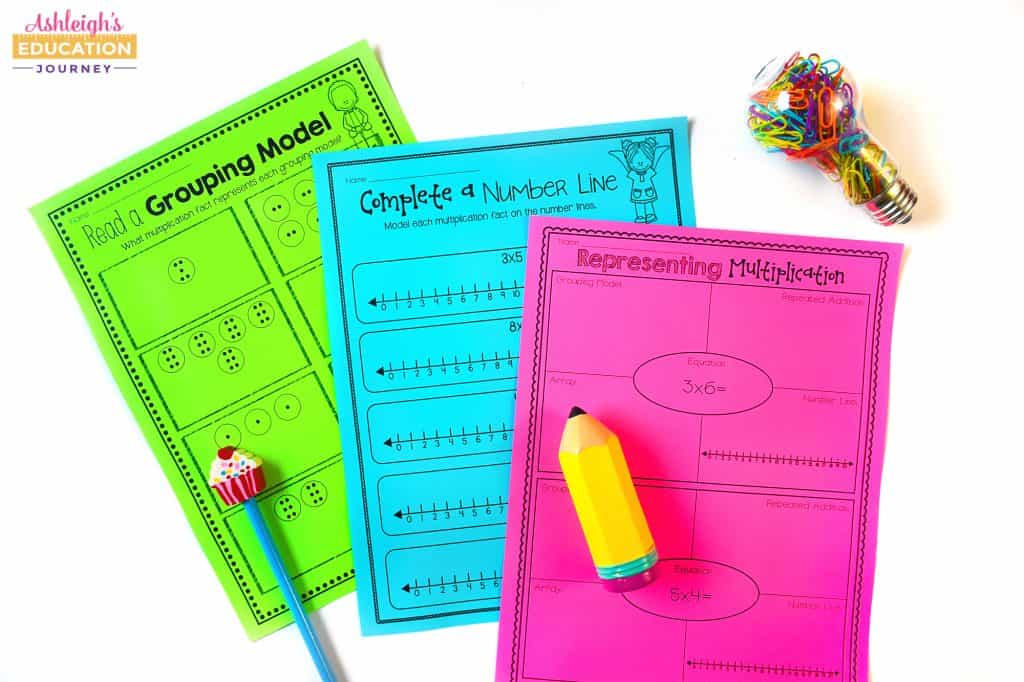
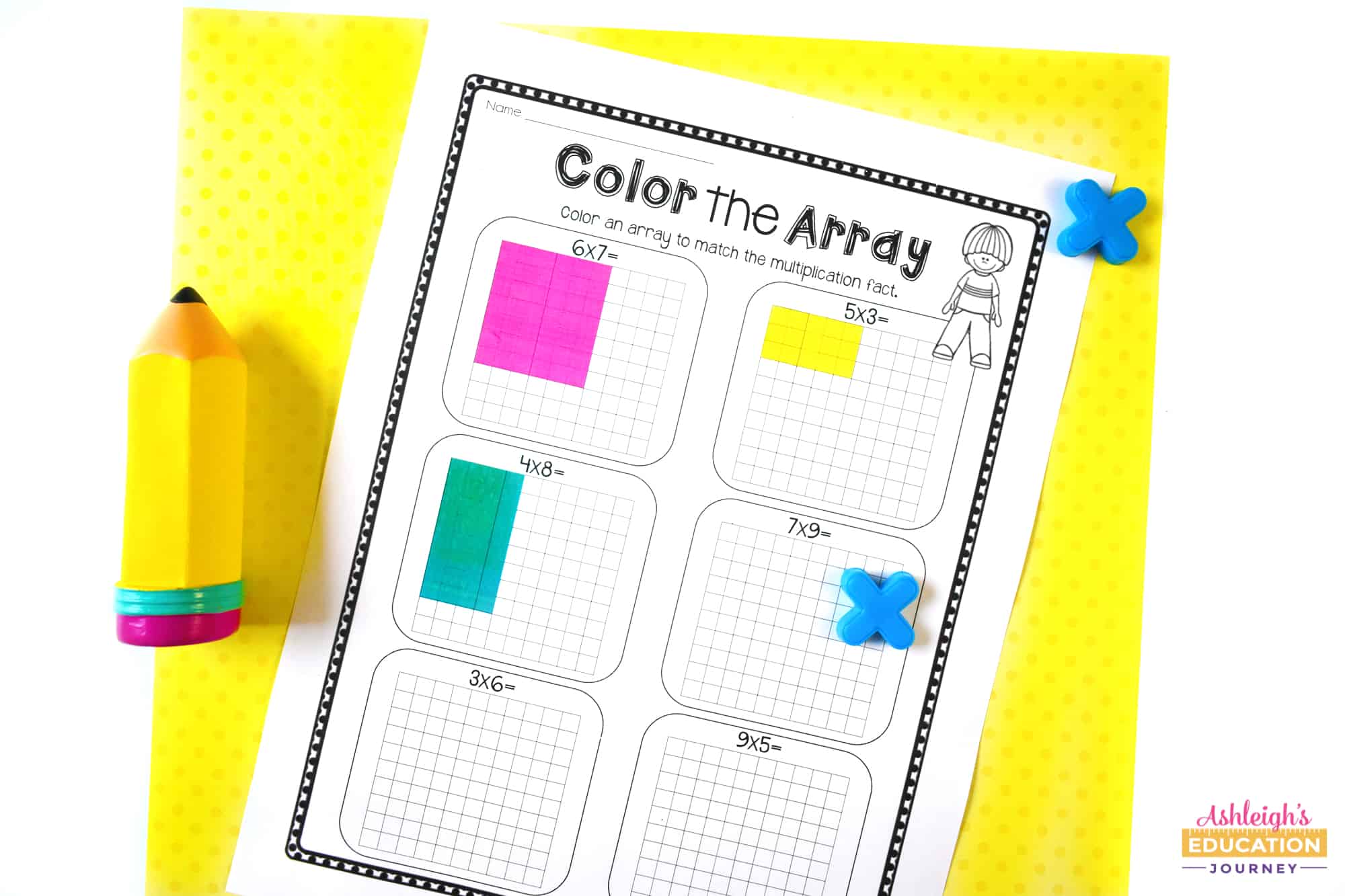
Vocabulary
I’m also careful to spend considerable time teaching multiplication vocabulary. Even though I don’t teach all of these terms for mastery, it’s still beneficial for my students to have a general understanding and recognition for terms such as factors and multiples. I love having students create a multiplication booklet for essential vocabulary.
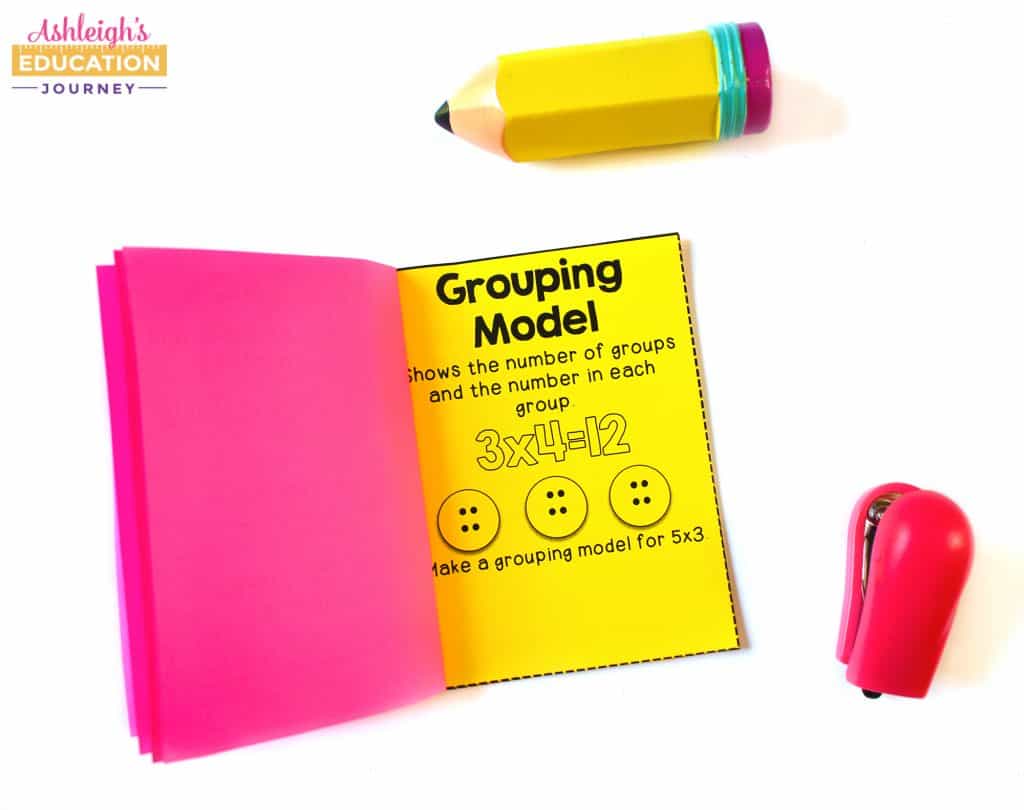
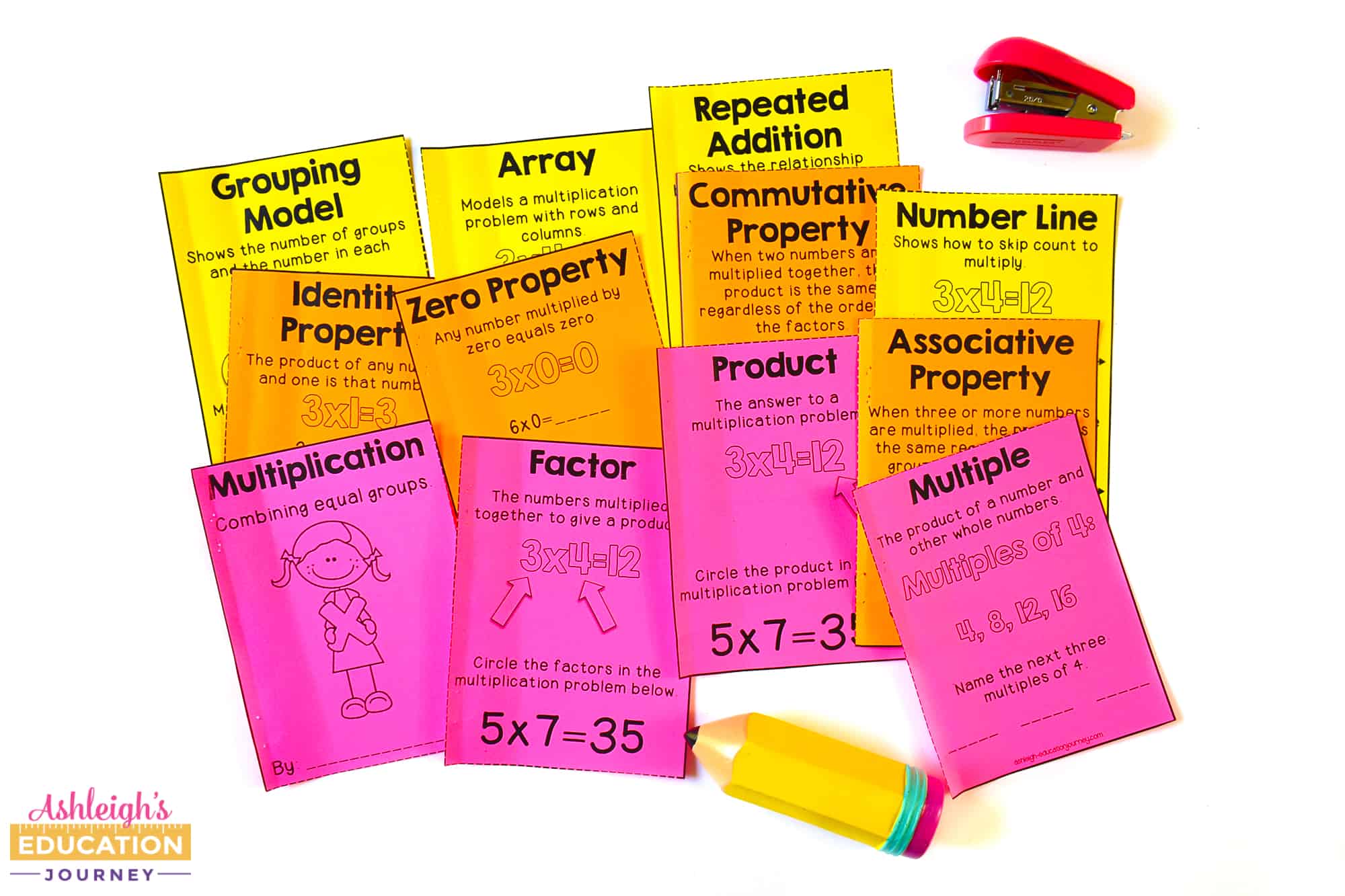
Centers
I also incorporate multiplication practice into our math centers each week. I always have at least two stations where students play different multiplication games. You can read more about that here. Most of my games include a built in spinner or dice. If I’m trying to save paper and copies (which is always), I like to laminate the paper and let students use counters rather than coloring in boxes. This allows me to reuse the same forms again and again. It also makes differentiation a bit easier, because I can have one copy of each form and not have to search and print again and again. All of my games below are from my No Prep Multiplication pack.
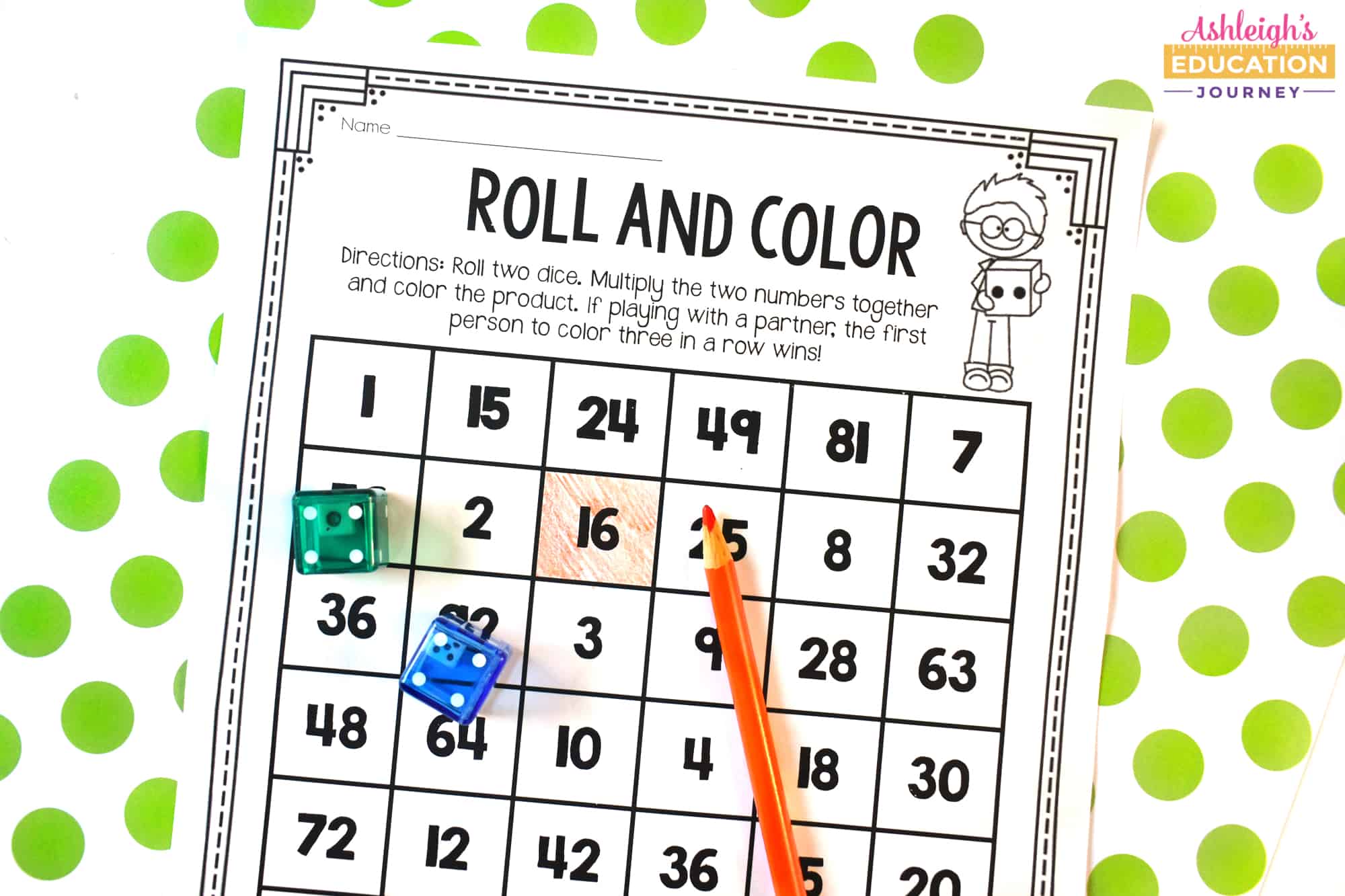
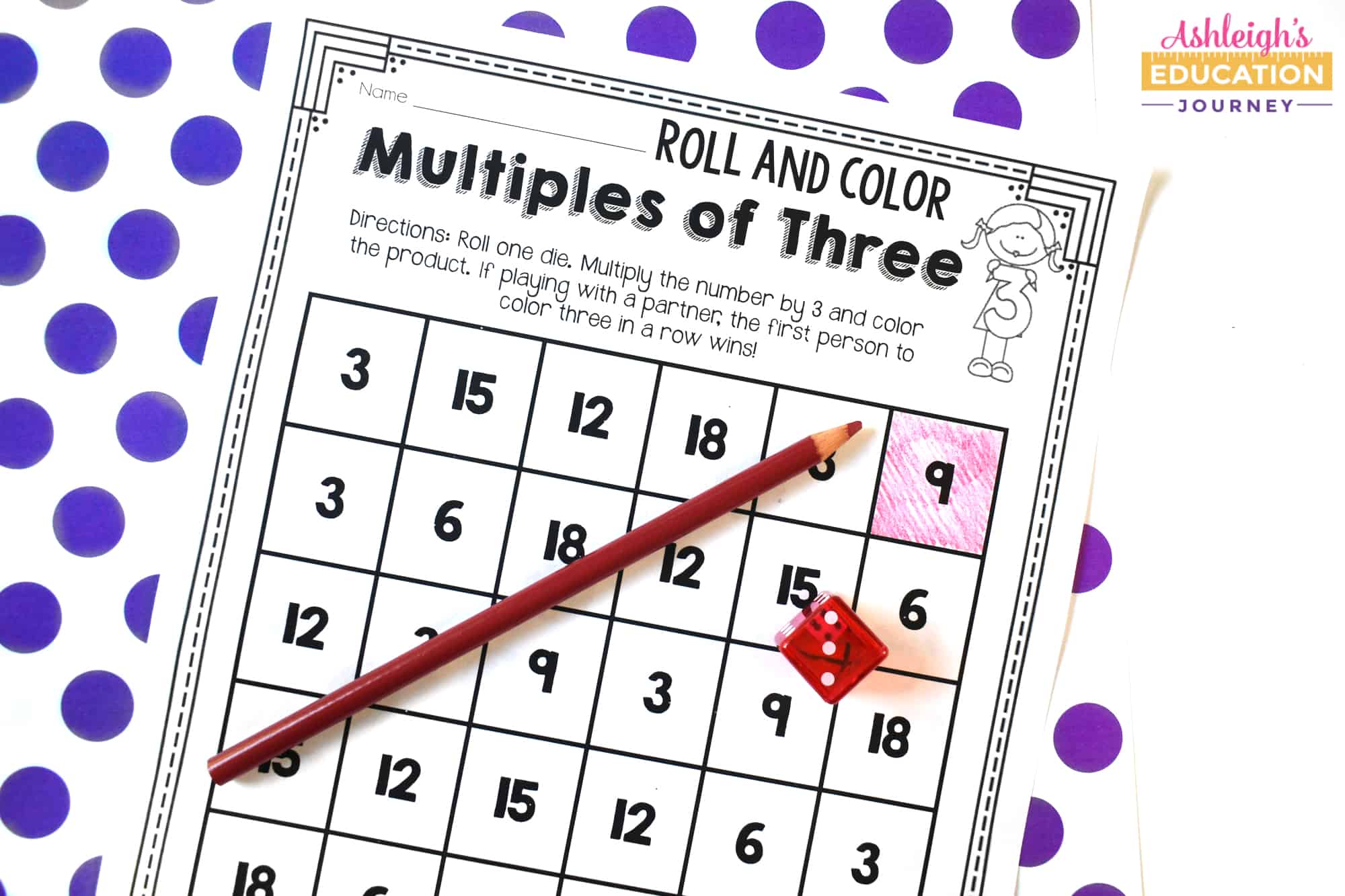
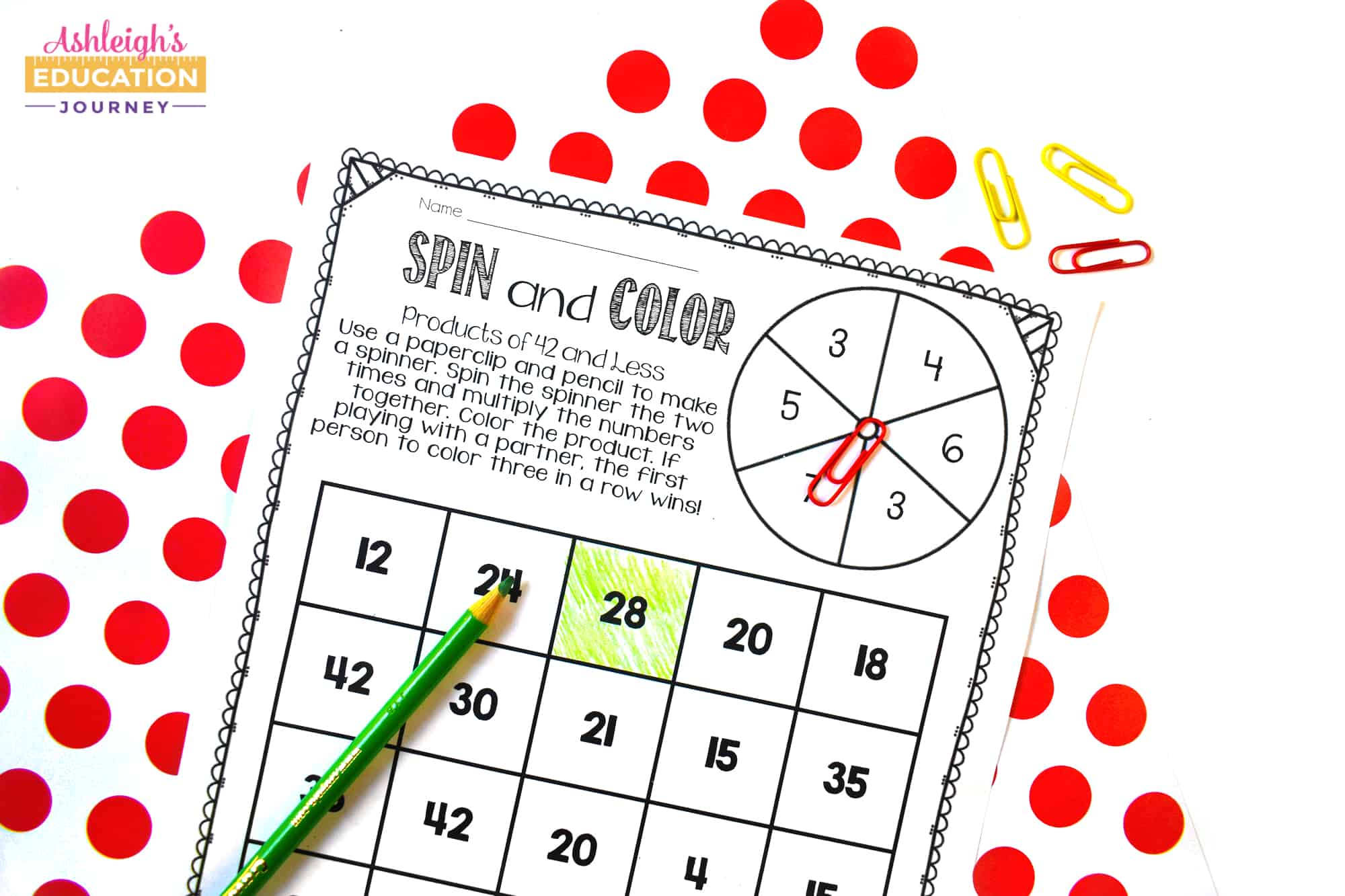
Homework Games
I also send home one of my Weekly Multiplication Games for homework, which have been a huge success with my students and their parents. This is nothing that I require my students to do or to turn in. Instead, it’s just a new idea for practicing multiplication each week in a game format. The only special materials needed are dice and a deck of playing cards, which are both extremely inexpensive. I love giving students ideas of games that they actually want to do!
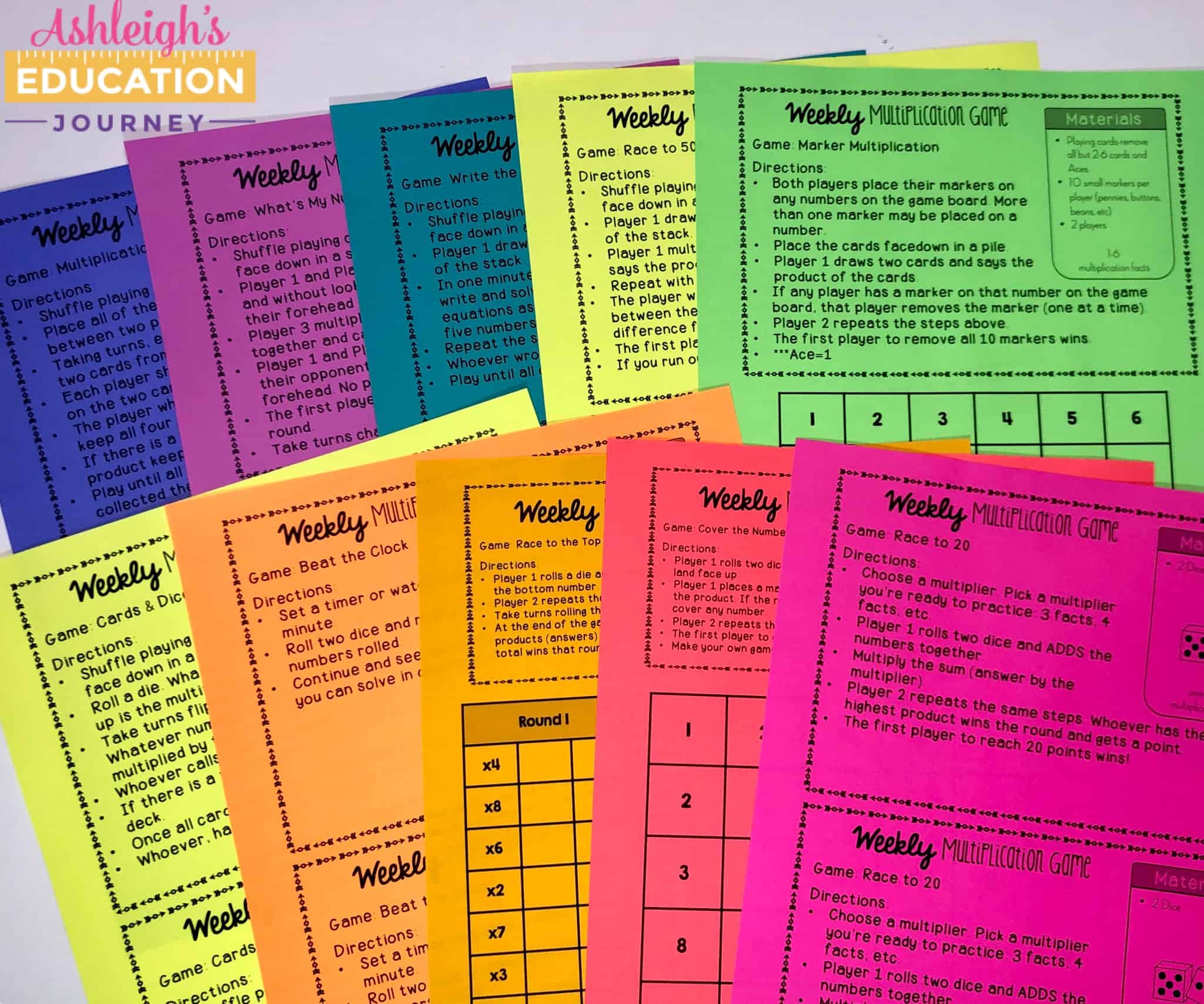
Multiplication Booklets
I’m not a proponent of isolated memorization of multiplication facts. Many of us have standards that include ‘fluency’ as a goal, and this fluency comes about when students develop number sense, and isolated practice and repetition will not develop number sense in our students. When students focus on memorization, they often memorize facts without number sense, which means they are prone to making errors and are not flexible in their thinking. The best way to develop fluency with numbers is to develop number sense and to work with numbers in different ways, not to blindly memorize without number sense. I love using my Multiplication Fact Booklets for additional practice. As students work through their booklets, they gain a conceptual understanding of each multiplication fact. They are able to solve the fact with multiple strategies, as well as begin to observe patterns and develop a mathematical vocabulary.
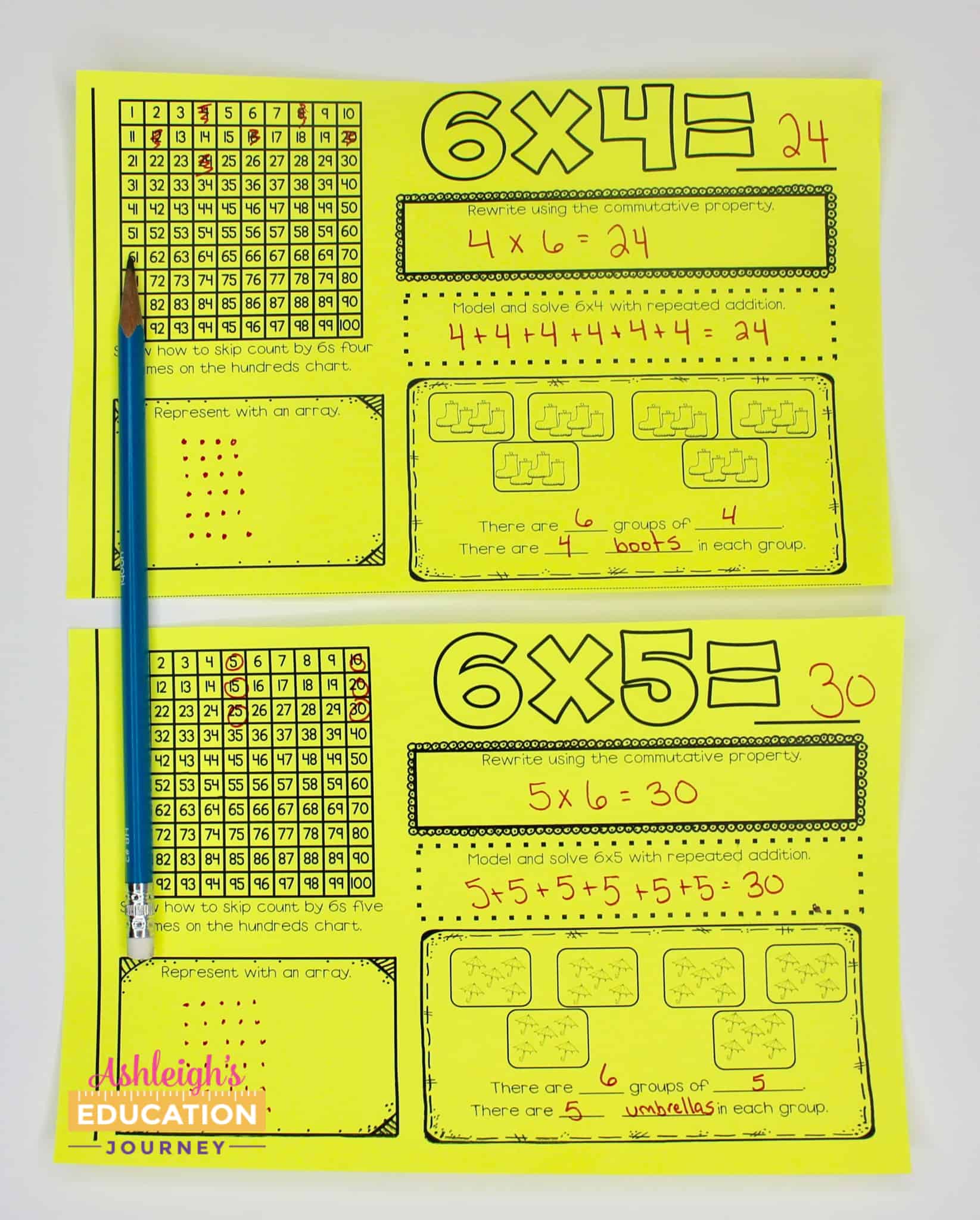
Flash Cards
I love using these multiplication subitizing flash cards to foster multiplicative reasoning and automaticity. These help students take multiplication understanding from concrete to abstract. You can download these cards here.
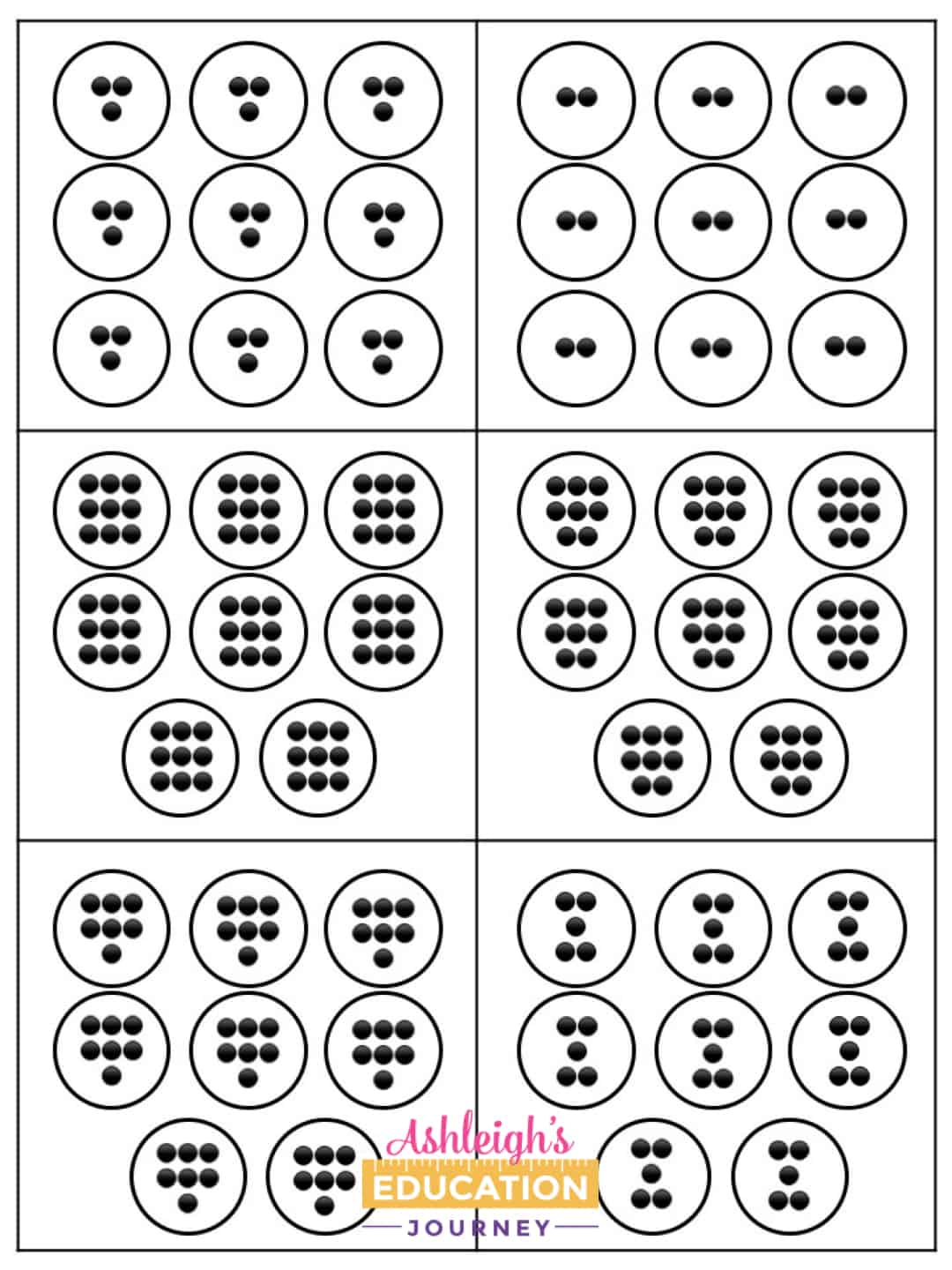
Xtra Math
I love Xtra Math because it’s free, it progresses students through multiplication acts in a logical order, and because students type in the answer regardless of how long it takes them to solve the multiplication problem. I also like that I can adjust what programs my students are working on. I’ve shared a clip from my account to show how varied students’ programs can be. For example, some students are still working on multiplication facts with a six second time limit, some are working on multiplication facts with a three second time limit, and some are on division facts with a six second time limit, and some on division with a three second time limit. I can see when my students practice, and I can observe their growth over time. I only use this as a tool, and not for my multiplication instruction.
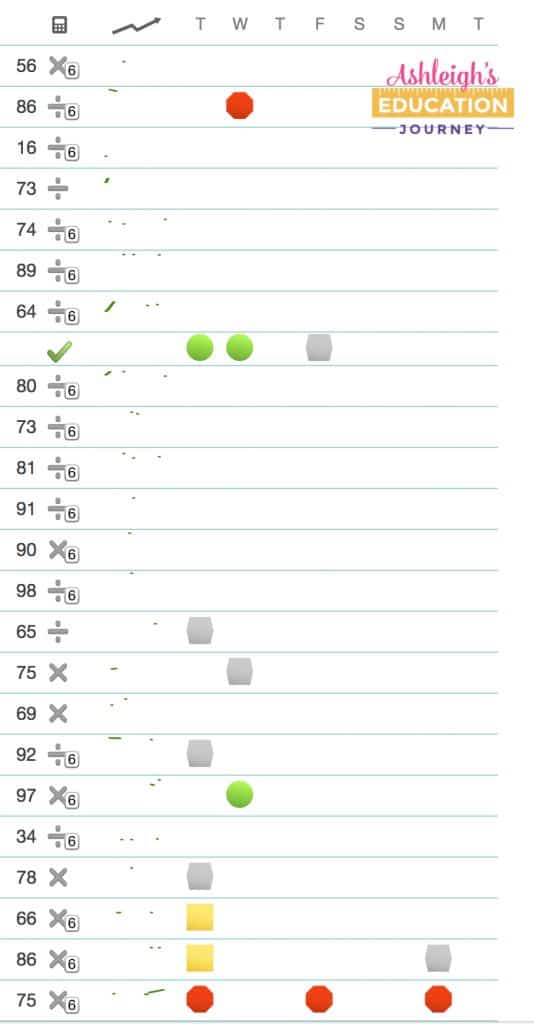
Timed Tests
When we didn’t have Chromebooks for Xtra Math, I used timed tests to keep up with who is on each set of facts. I know that timed multiplication tests have recently become frowned upon, but I don’t want to completely do away with them. I’m rarely for any all or nothing approach when it comes to education. Instead, I tend to favor a more balanced approach with a healthy dose of common sense. Timed tests don’t have to be a bad thing. I believe that it is important to monitor students’ progress on math fact fluency on a consistent basis. This is something that needs to be done on a regular basis to ensure that all students are making appropriate gains. If I see that a student is struggling with timed tests, I work one-on-one with a student, and I try to determine what is causing the student to fall behind. If I see that the student is simply slow at writing numbers but knows the multiplication facts, I move that student forward as needed. I don’t believe a student should be held back for something such as slow writing or getting nervous when the timer is set. Other times, I see that the student is making progress but needs to apply some of the strategies we’ve learned in class. I’ve also found that some students have a hard time processing the question, rather than the product of the math facts. Then, there are some who simply do not know their facts, and I do not move those students forward.
I give both 20 question and 100 question timed tests. I intentionally reverse the order of the factors to focus students to apply the commutative property as they learn their facts. This makes the larger facts (7s,8s, 9s, etc.) so much easier for students! When I give the 20 problem timed test, students have one minute to complete all of the problems. I also make sure to have several different versions to keep students on their toes. You can download the tests here!
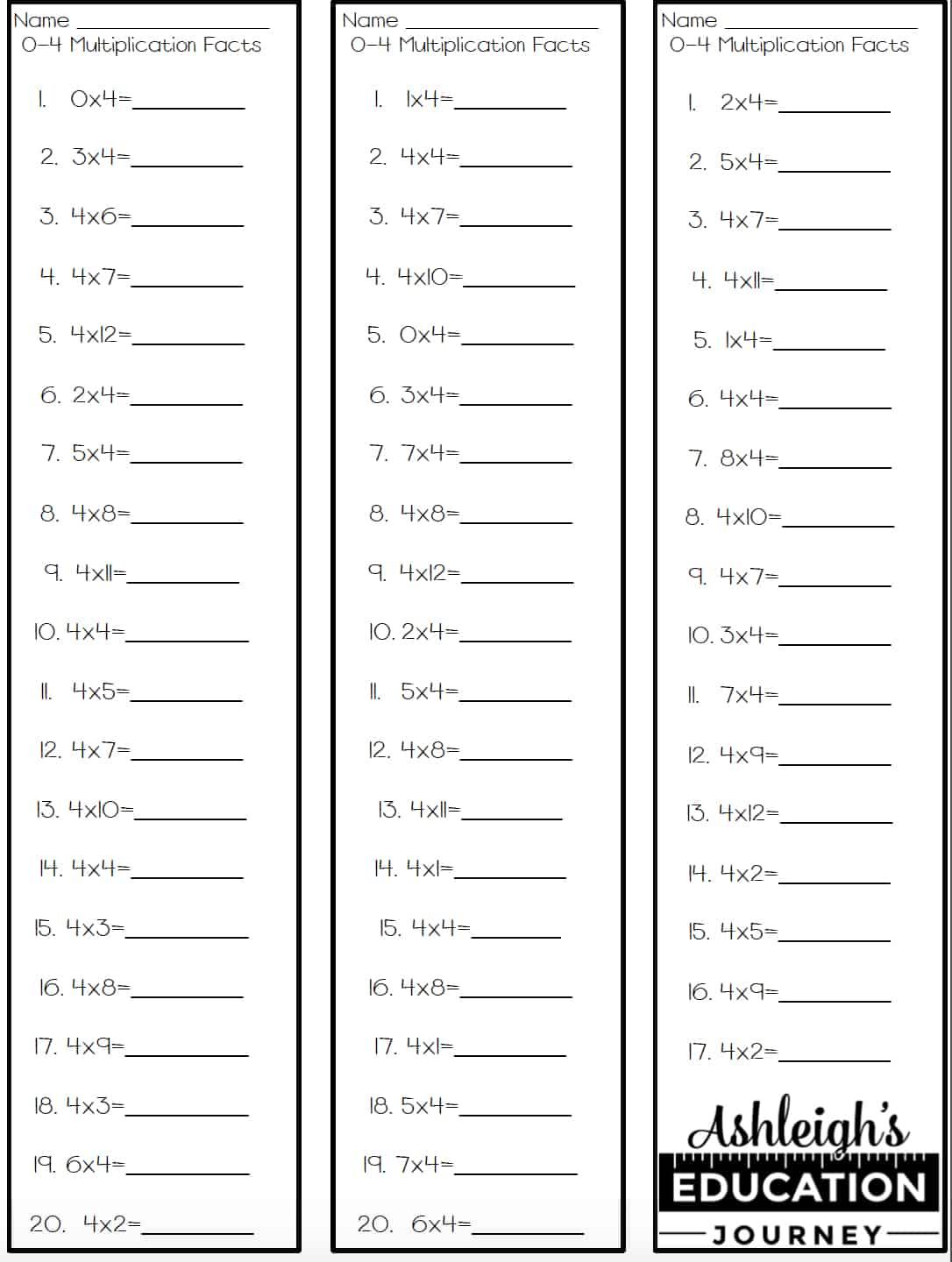
While the 20 question tests are fairly easy to pass, the 100 question tests are a bit more challenging. I continue to use the rule of thumb of three seconds per problem, so I give students five minutes to complete the test. The big difference is that these tests are cumulative and force students to remember their previous math facts as they move forward with new math facts. This test also requires the application of the commutative property. You can download the 100 question test here.
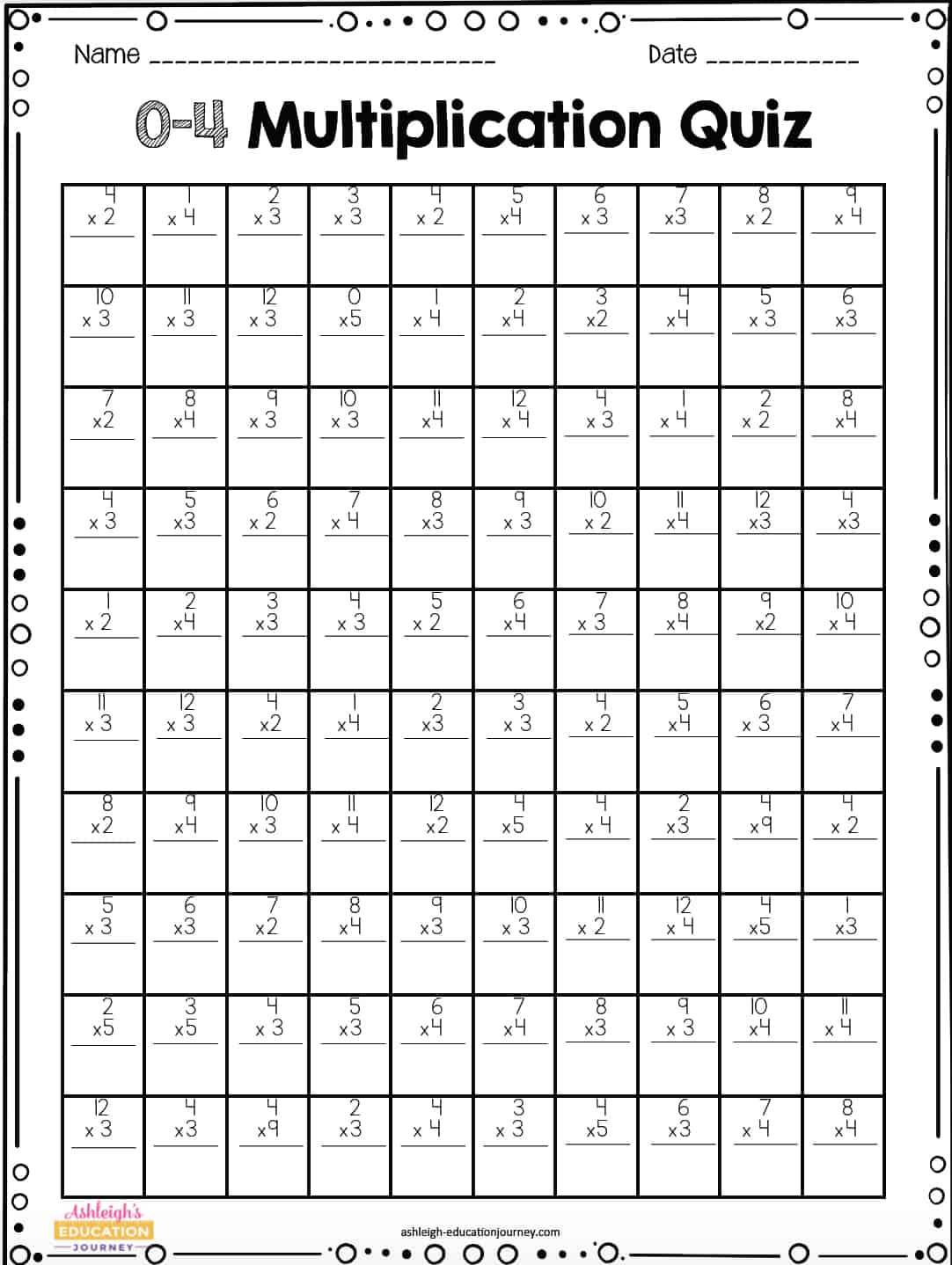
I try to keep timed tests light and silly. I don’t want students to feel pressured or frustrated, because that’s not going to help anyone. One of the easiest, yet most efficient, ways I keep timed tests fun is to randomly change the ring tone to my timer. Yes, it sounds trivial, but my class gets the biggest kick out of it. It’s incredibly important to display and encourage a positive attitude with a focus on growth. I don’t like to compare students to each other, but I like for students to work to beat their previous scores. I recently made a small modification to our 100 question timed tests that will allow students to compare their previous number correct to the number correct they scored on their current timed test. I’ve found that students are highly motivated by the visual a graph provides, so I’m going to have students graph their progress. This is included in the file above!
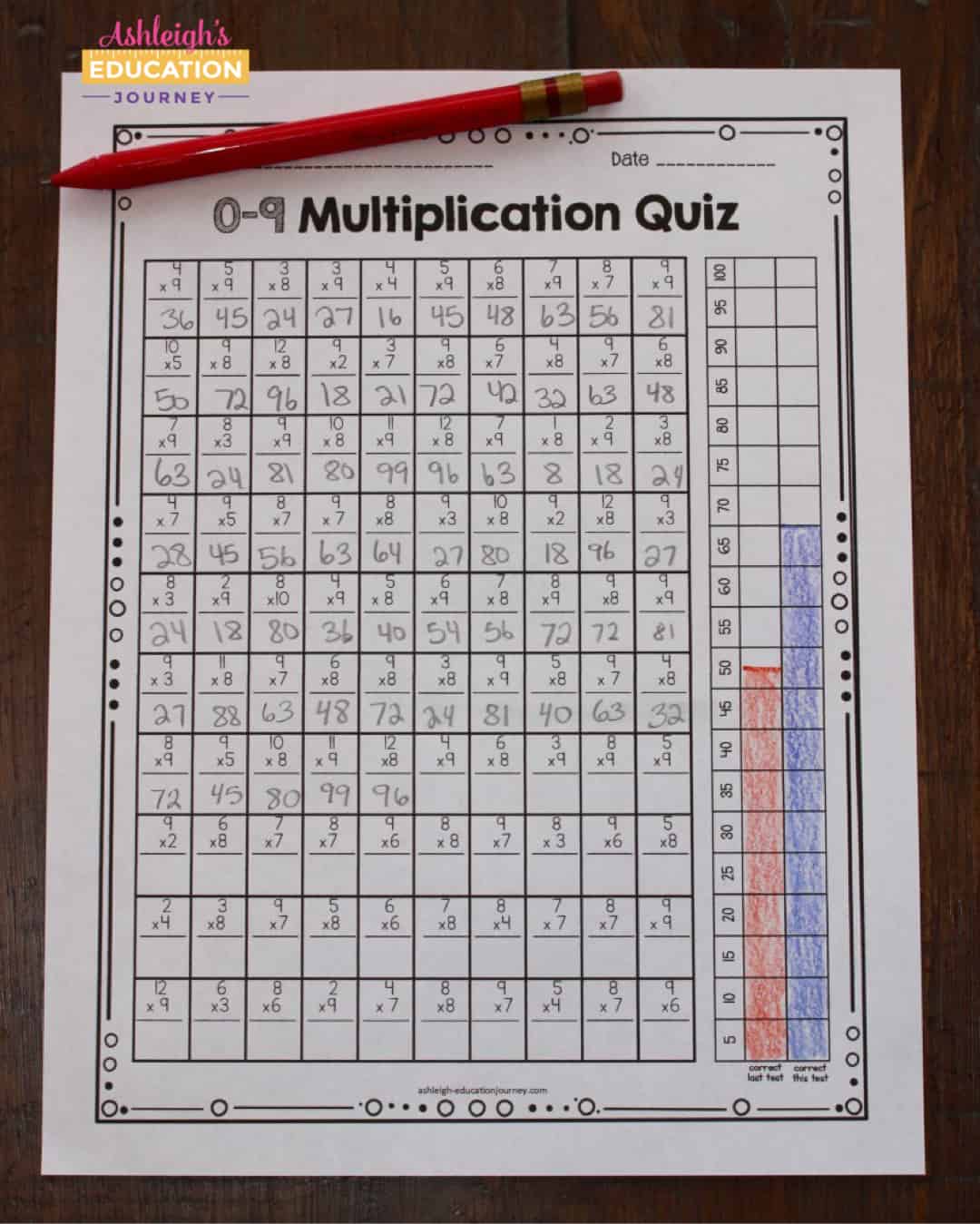
I’ve also created a math facts graph that students can use to track their progress. I like using this graph with the five minute tests, rather than the one minute tests. You can download it here.
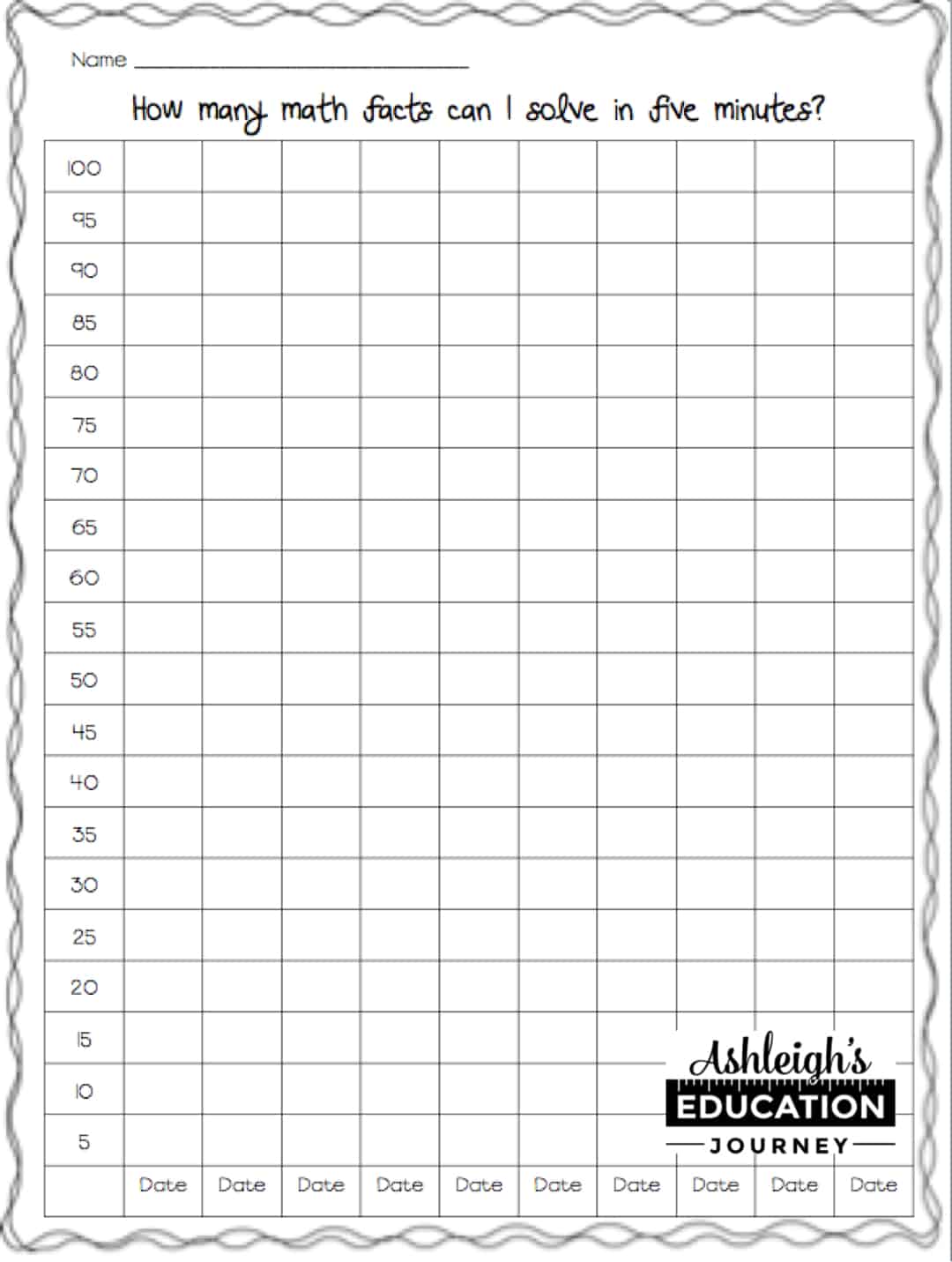
I also think it’s beneficial to show students just how many facts they really have to memorize. For most students, the 1, 2, 5, 10, and 11 facts are very simple, so I show students a 100s chart with those facts removed. That allows students to see what problems are left that they will need to learn. Then, I highlight the inverse multiplication facts, which shows students how to reduce what they need to memorize in half! This looks MUCH more manageable that a HUGE list of math facts to learn.
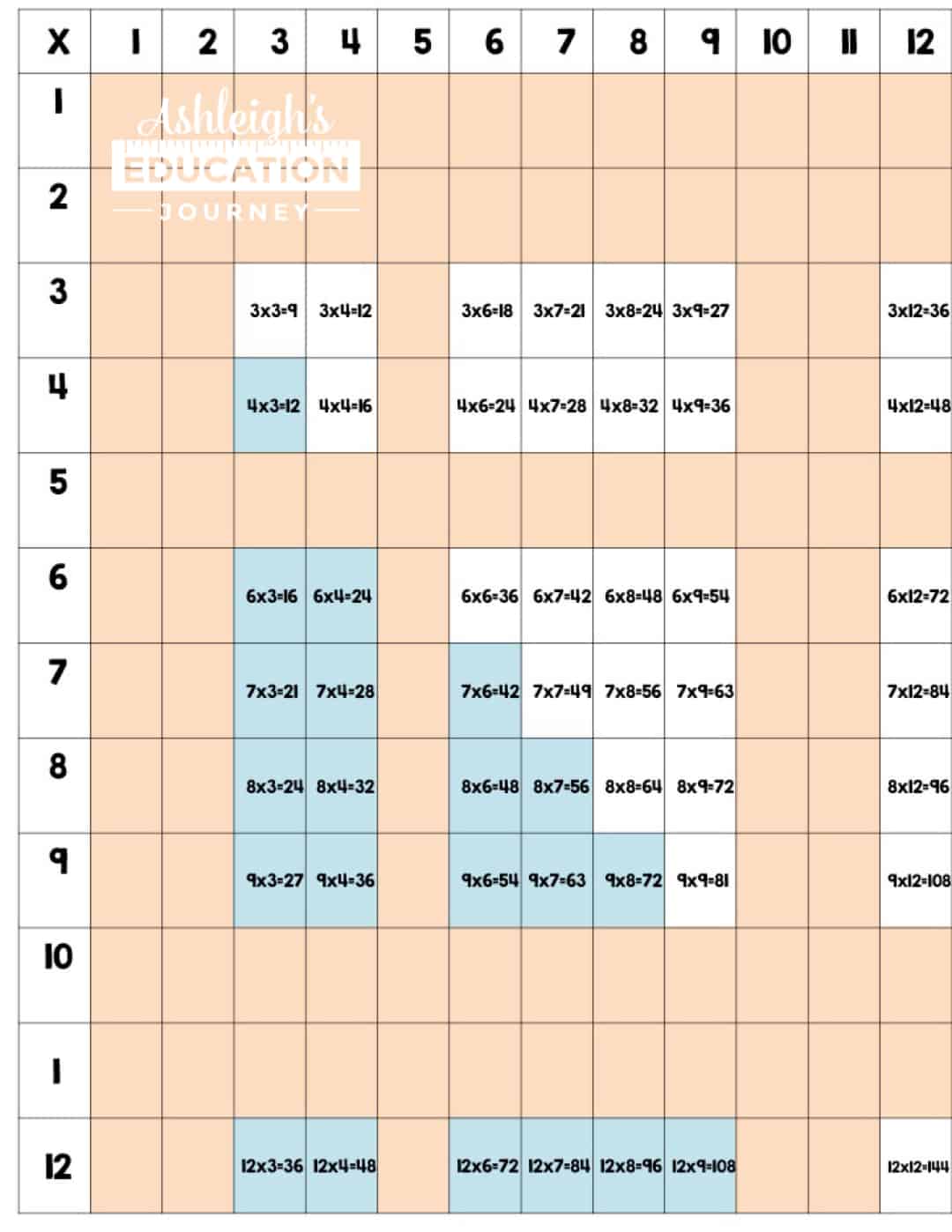
When All Else Fails
Of course there are some multiplication facts that are tricky. That’s when I break out pieces of Multiplication the Fun Way. There are songs, posters, books, and even a movie that are PERFECT for those tricky multiplication problems.
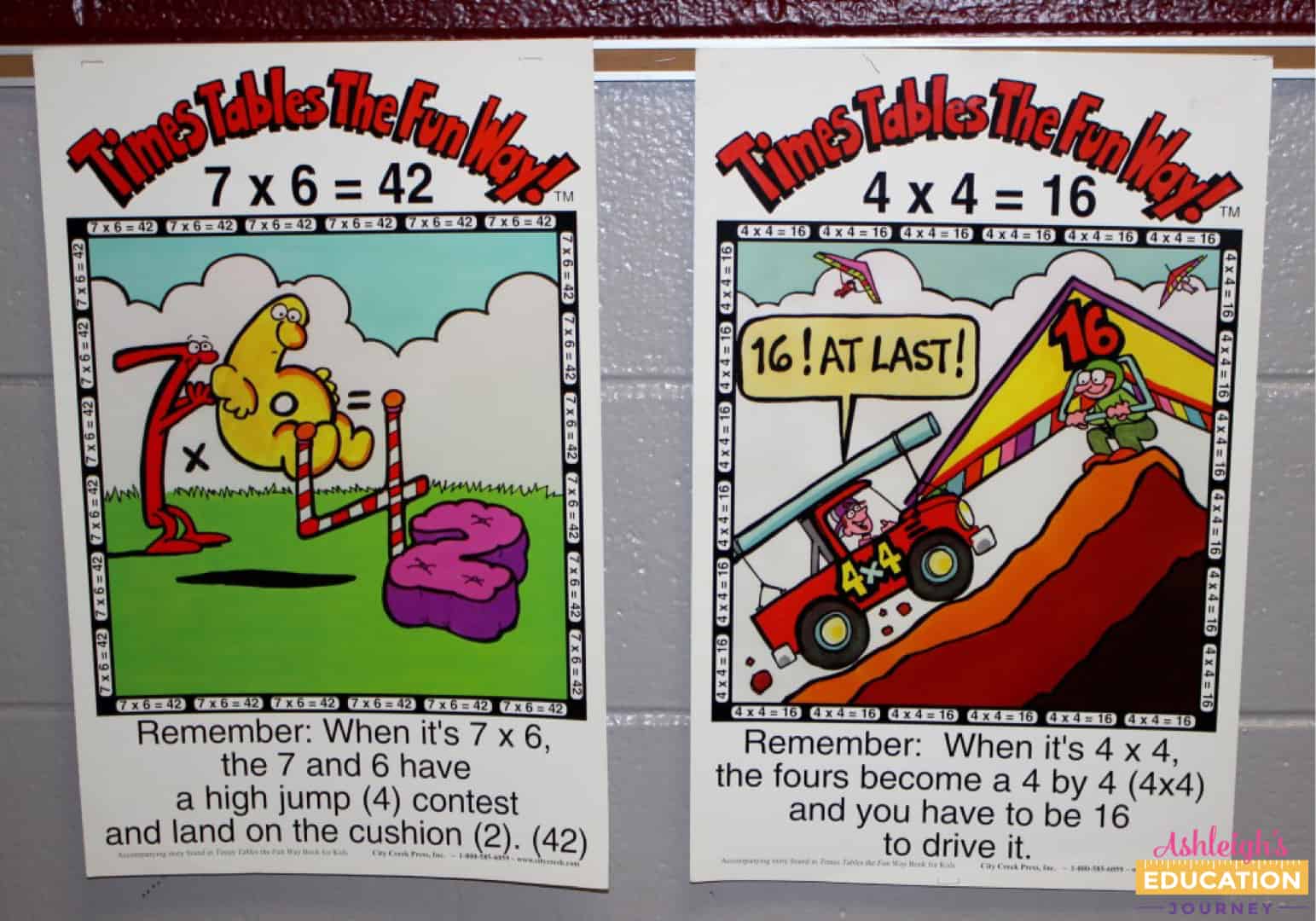
Motivation
At least 90% of the time I try to rely on intrinsic motivation. I absolutely believe that is the best form of motivation, and I consistently see the benefits of intrinsic motivation. However, when the stakes are high, I’m willing to utilize a little extrinsic motivation. Even though I continually stress the importance of multiplication, I’ve found that my students sometimes need a few extra incentives to practice their facts at home. We practice at school almost everyday, but it’s still necessary for students to practice at home to truly solidify their learning.
One of my favorite new incentives is the multiplication bracelet I bought from Really Good Stuff. I almost didn’t buy them, because of the low reviews about the numbers rubbing off. They’ve either fixed the problem, or my students are extra careful with them, because we haven’t had any problems. I give students a bracelet whenever they “master” the set of facts they are currently working on. For instance, when a student passes their 3 facts, I give them the 4 facts bracelet. This allows students to have something to look at as they prepare for their next set of facts. It’s also a great way to let students share that they’re working on a new set of facts with their parents! They have definitely become a collector item with my class, because I almost always have several students wearing all of the bracelets they’ve earned. My students are very proud of them! Update: Now that I teach multiple groups of math, these are no longer economically feasible for me to purchase. I also now rely more on Xtra Math for following student progress, so students don’t practice one set of facts at a time.
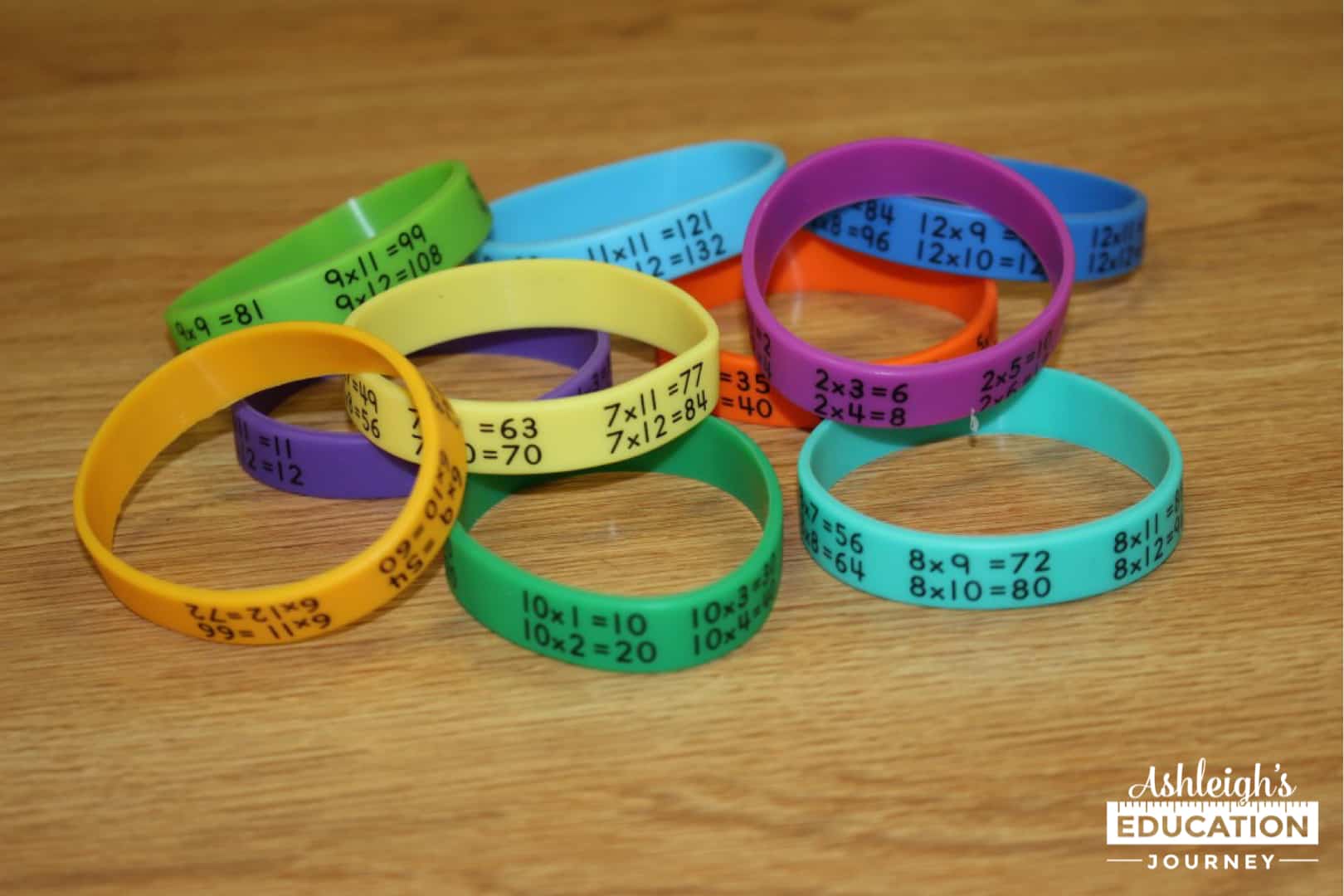
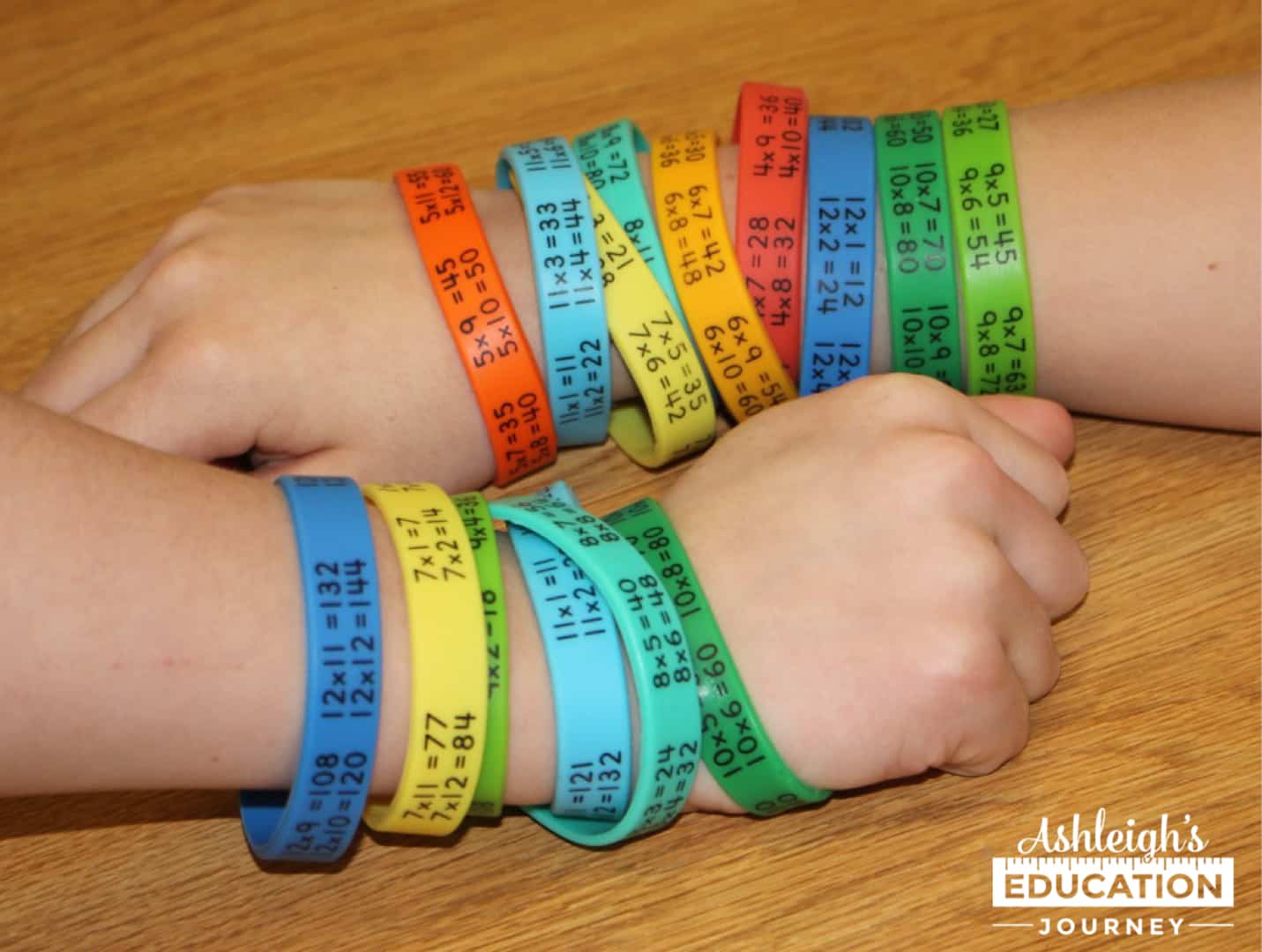
This will be the second year I’ve used brag tags for multiplication facts. Students can earn a brag tag when they pass their 0-5 facts, 6-12 facts, and division facts. I keep the chains and brag tags until the end of the school year. Then, I let students take them home to keep. I don’t give a brag tag for each set of facts since I already give them a bracelet. I’m also fairly confident that I wouldn’t be able to keep up with it for the course of a year. I purchase all of my Brag Tags from School Life, and I love working with them! I love that I can customize them for my own students! You can also customize these to celebrate growth rather than the mastery of a set of facts.
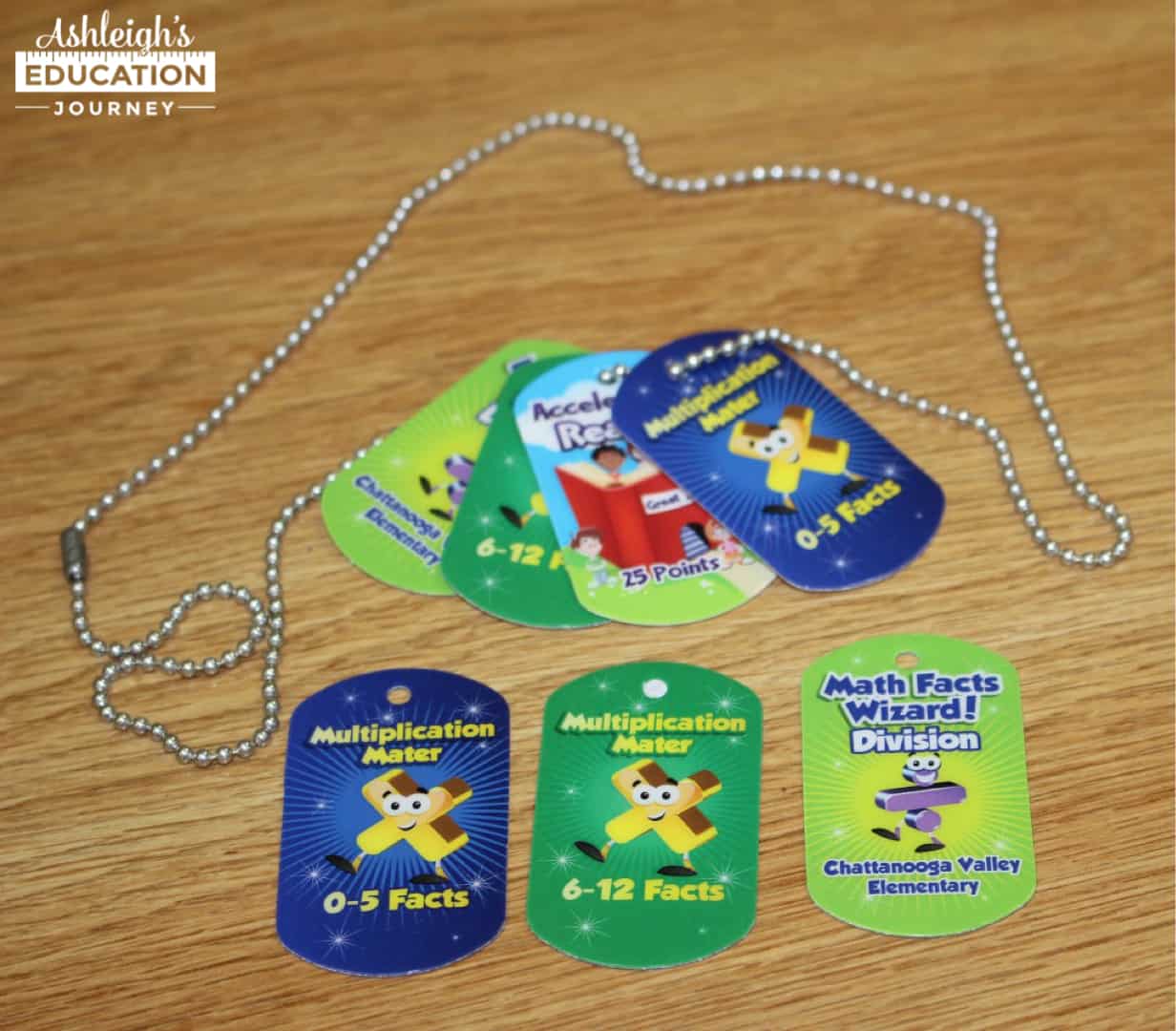
Celebration
We also have a multiplication ice cream sundae party to celebrate learning multiplication facts! Students earn spoons, bowls, ice cream, and toppings as they learn each set of multiplication facts. I always have to explain that no one is HAS to get a topping they don’t like, and that I’ll have an alternative (sorbet or something else) for those who can’t have dairy. Since I hold the party toward the end of the year in spring, all students have time to learn as many sets of multiplication facts as possible. I send the letter below home, and students can use it as a reference of what topping they are working toward. Some years I’ve sent this home at the beginning of the school year, and other years I’ve waited until the novelty of multiplication facts wore off and used this to re-motivate. You just have to use the dynamics of your class to determine how and when to introduce the sundae party.
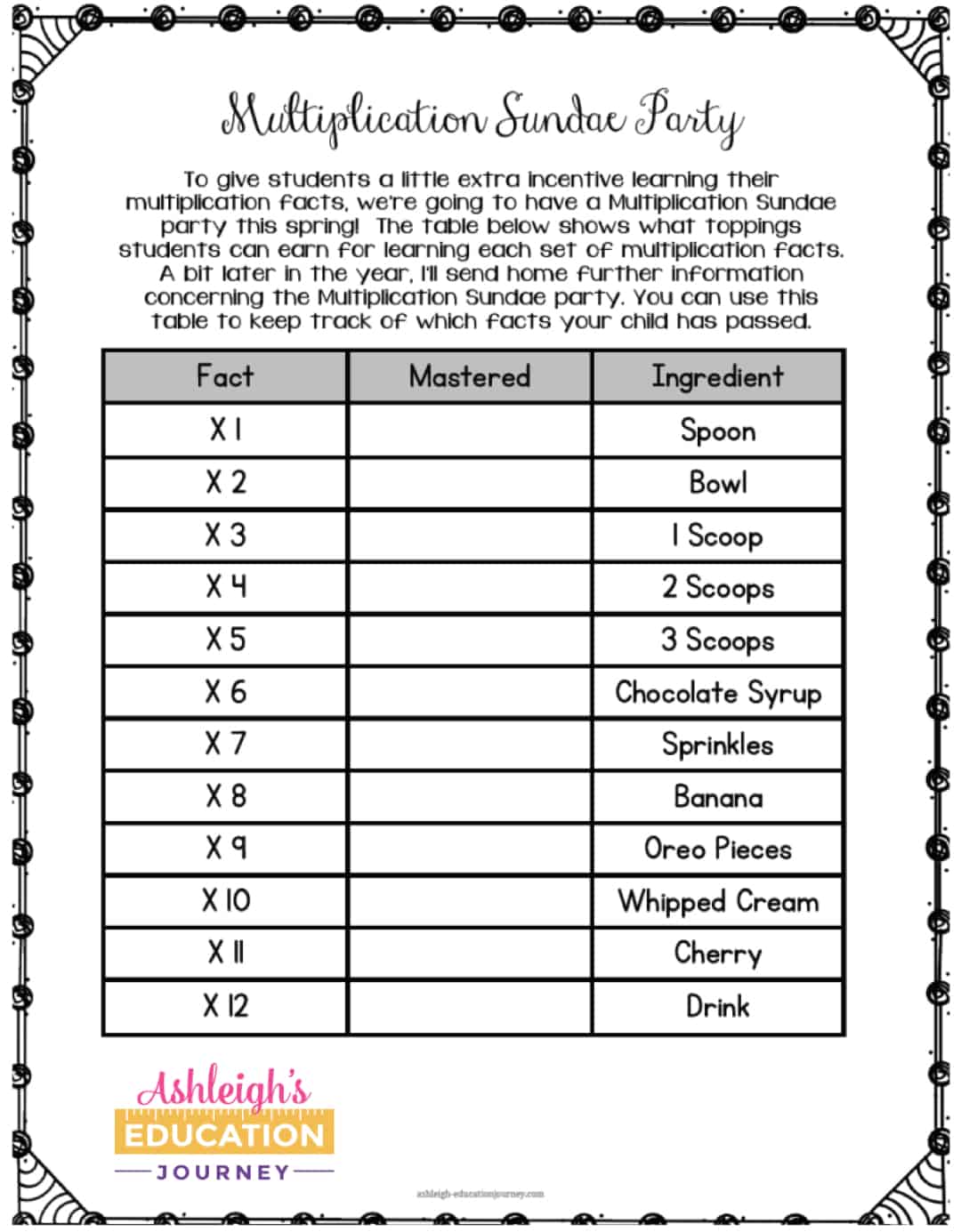
I also have a version of the letter that is better suited for Xtra Math. I also like that this is a bit more equitable for students, since you can control the settings on Xtra Math. This will allow you to push students who need a little extra nudge, and give some students a little extra time. You can download this version here.
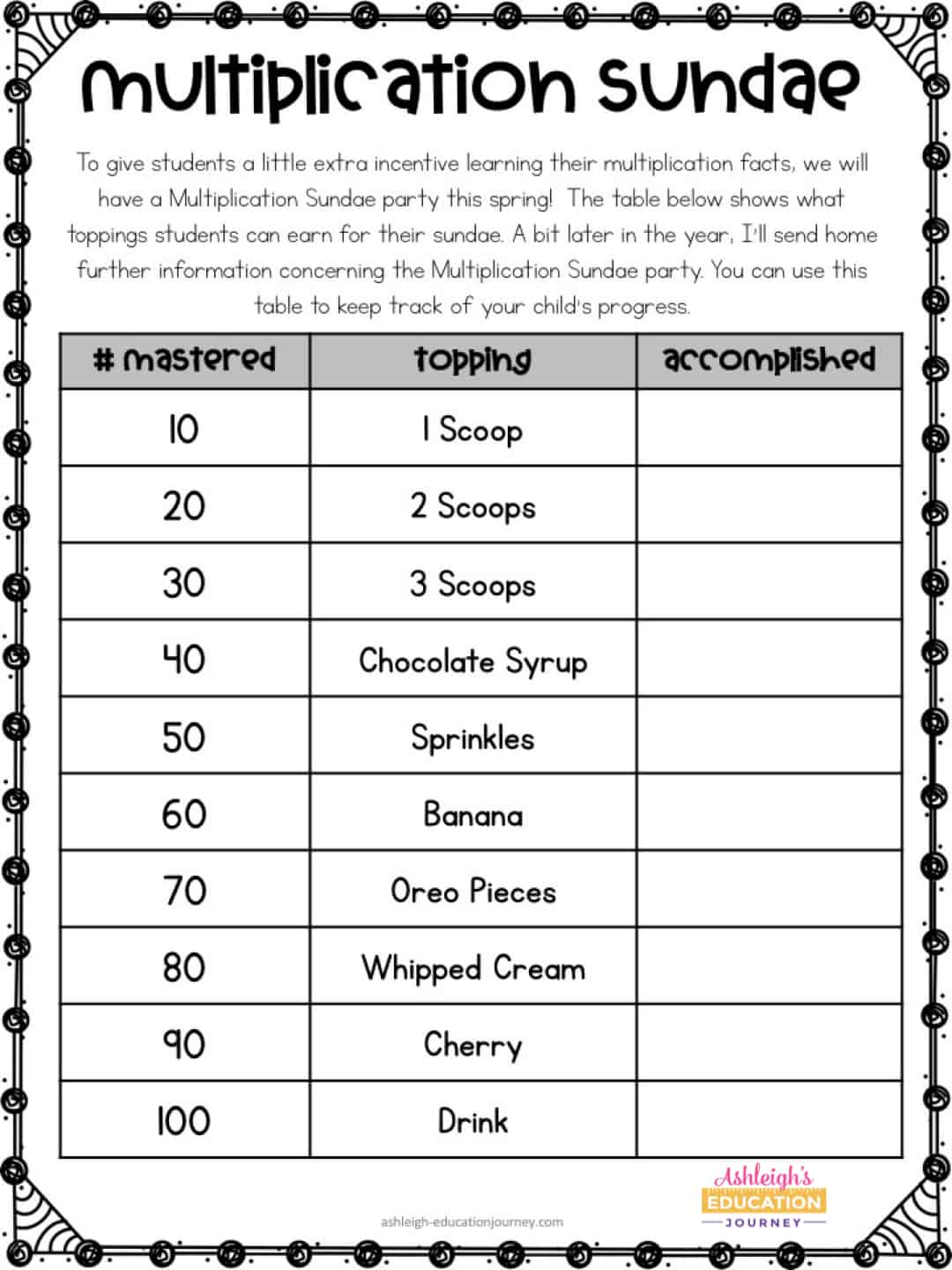
I also printed a little coloring activity where students can color in parts of their ice cream sundae as they master each set of facts.
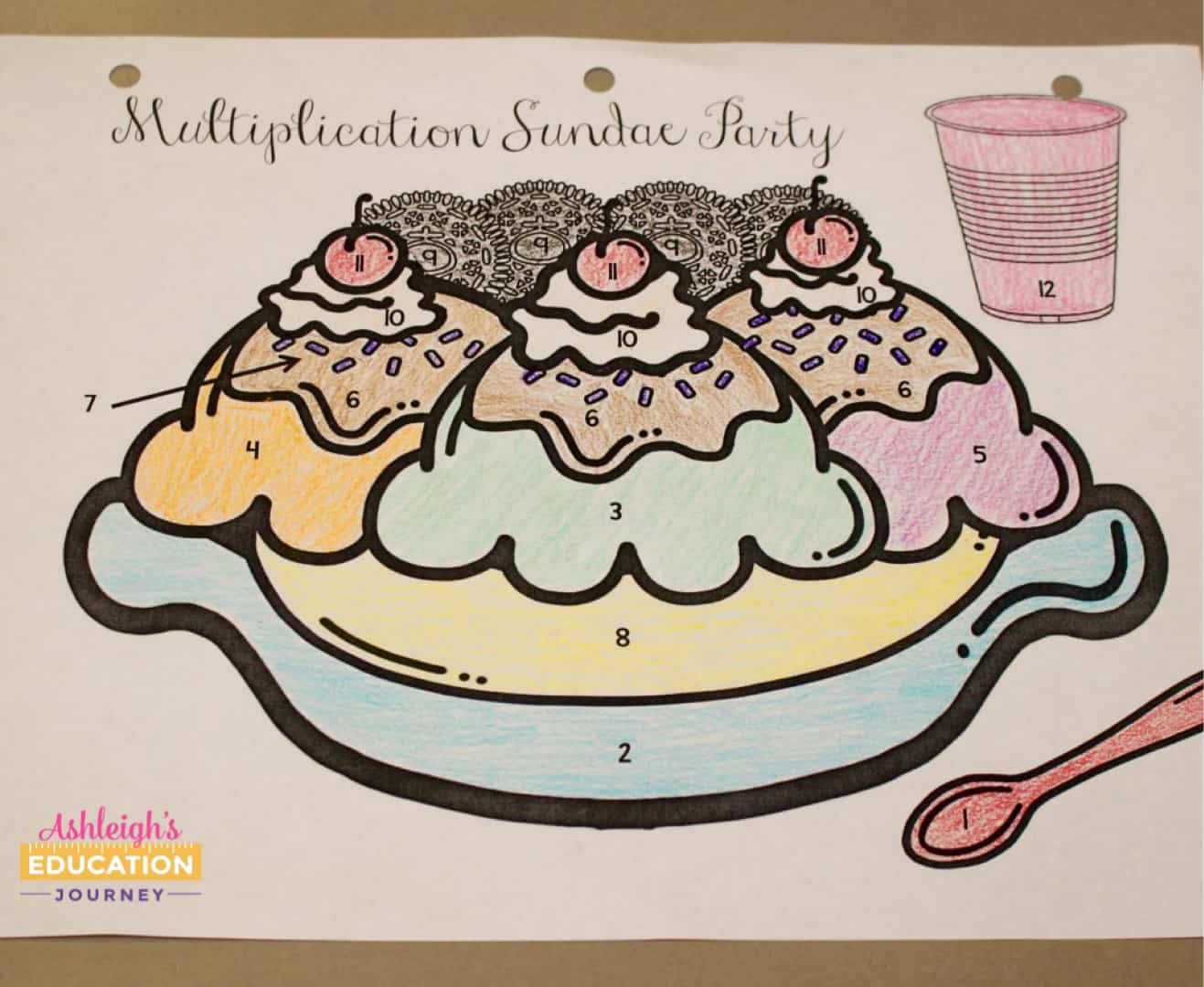
I typically have several parent volunteers for the multiplication sundae party, and one of the challenges I’ve had, was that parents didn’t know who got what topping. To help with this, I made a multiplication sundae punch card. I’ll let students punch the corresponding square when they pass a set of multiplication facts. Students will use this as their ticket to the party. You can download the coloring page and punch card here.
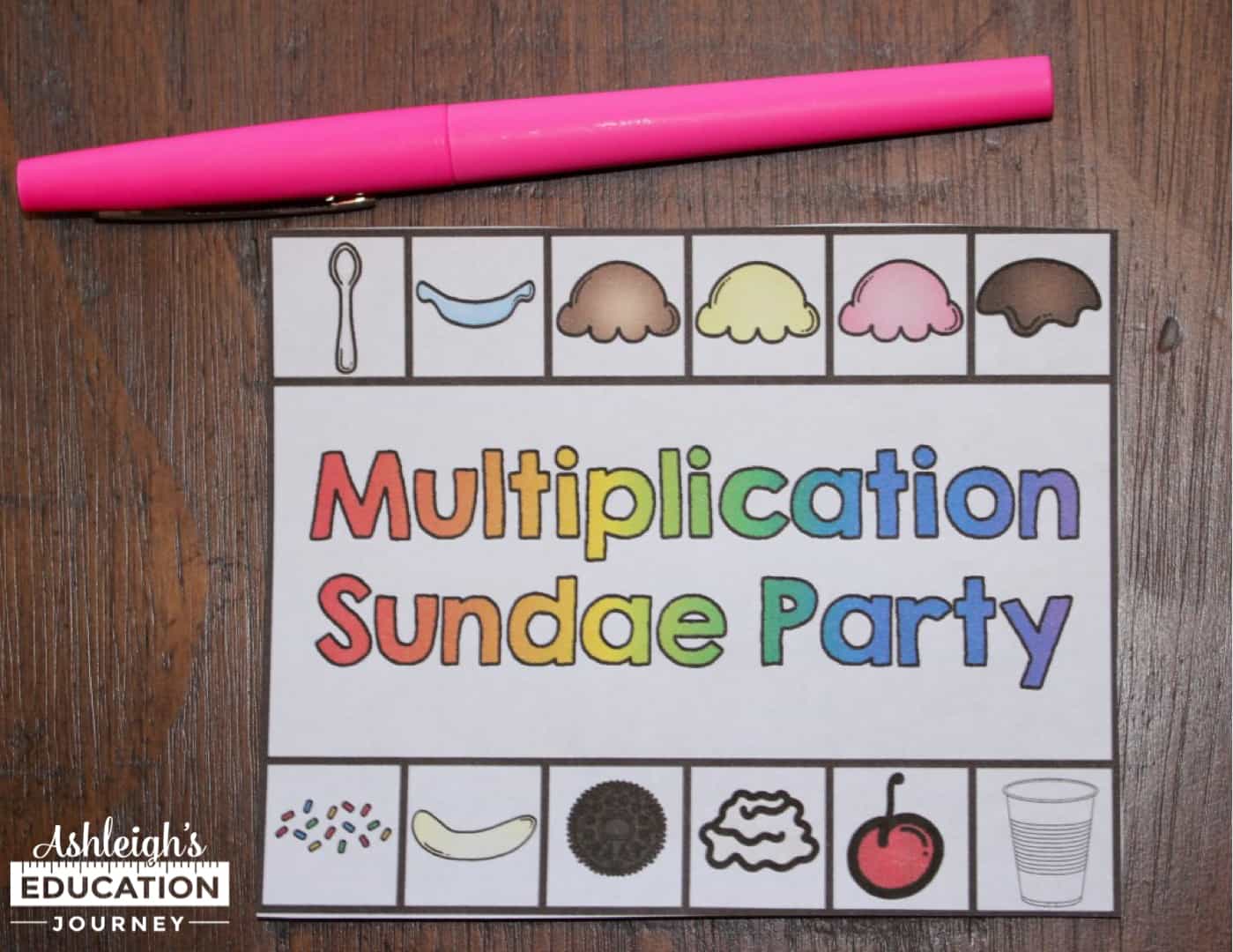
I have made a few alternative versions to the Multiplication Sundae Party.
If you have any other great ideas for teaching multiplication facts, feel free to share! You can never have enough tools for this challenging skill!




This is just what I am looking for to get my middle school special Ed students motivated to learn their facts. Thanks so much for sharing:)
This post is an incredible resource! Thank you for putting this together.
How long do you give them to do the 100 math facts.
I give them 5 minutes.
Is there a division one! Would love to have students who have masted 0-12 move onto division facts.
Would you happen to have a way to change the multiplication sundae resources to division? I just love this idea! Thanks for sharing!
I’ll try to do that!
I love this post! Thank you for sharing. How do you handle this with students in your room who might have a learning disability that makes it extremely difficult to memorize facts. Do the bracelets or sundae cards create an issue for them? I would love your suggestion for keeping the bar high for all. Thanks!
I work with the special education teacher with that. Sometimes we do an oral assessment or give them extra time. It really depends on the student. I don’t want anyone stressed, so I’m careful to take their cues.
Thanks!
Did you buy a set of the multiplication bracelets for each student? I LOVE the idea, but it would be over $100 for a class set. 🙁 Thinking of putting on wish list for parents at the beginning of the school year…
I used money from PTO. I’ve thought about asking for donations to help cover the cost too.
Is there a way you can make the Multiplication Sundae editable? I’m teaching 4, 5, 6 th grade inclusion sped class and so have some working in addition and subtraction and others multiplication and division. I would love to differentiate this so all students have a goal they can reach for the Sundae party. This seems like a great motivator for them! Thanks for this comprehensive blog post with freebies
I have self-contained not inclusion,
HI
I looked through your bundles on TPT and cannot find the multiplication sheets where the students can keep track from previous score to their present score as you have shown a picture of on this site. Where can I find them? Is there a link on this post somewhere? They are just exactly what I need!
Thanks so much for all you have shared about multiplication!
Hi! Thank you so much for this resource! I was wondering how you run the time test. I clicked on the link above and it went to a not available page. Do students have to pass the 20 problem test then the 100 problem test to pass each number? Thank you!
Can I get a copy of the sundae sheet?
There should be a link in the post! I’ll check it to make sure it’s there!
I like the bracelets! I would like to see bracelets with just the factors for students to practice their skip counting. (3,6,9,12, etc)
I would love that too!
Hi! How do you grade all the tests? I was grading at first, but then found an online self-graded sight (which is now going away….grrrr!). It looks like I’m going to be grading again, but it’s soooo time consuming. Thanks for all the links on this post, though! I love the sundae incentive!
I’ve actually switched to using Xtra Math for my timed test. When I did give them, I was super fast. I would just skim them in a couple minutes.
Thank you so much for the freebies!
Hi! Thank you for sharing this wonderful resource! I’m excited to use it this year. I noticed that your 20 question timed tests only go up to 9’s, do you have a set for 10-12’s?
I only have an old version. Let me try to update it!
Thank you! I greatly appreciate it!
Do you have the 10’s-12’s set?
Great resource thank you!
I don’t at this time.
Hello! When I click on how you administer the timed tests, there is an error. Do u have info on this?
Also, I would like students to graph for facts they master correctly, not just the number of facts they are able to complete in 5 minutes. Do u have something for this?
Thank u so much!!
Are you getting the error when you download a file?
How do you administer the tests in Xtra Math? Specifically, what are the settings you select?
I tried putting it on multiplication. When I tested it out, it tests the student on various facts, not one set of facts.
When I put it on assessment only, it tests addition, subtraction, multiplication, & division.
Thanks for your help!
I go into students settings and select the custom setting.
Hi, I am familiar with XtraMath but seem to be missing how you use it for time test. I have gone into custom. Is there a way to set it so the kids do one fact at a time or how do you decide that they passed each fact?
By the way I a huge fan of your blog.
I look at the percent they have mastered, rather than a particular set of facts now.
I love the times tests with the tracker graph on the side. Do you have a divisions timed test with the graph on the side?
Thank you! I don’t have them at this time, but I can work on it!
Thank you, would be wonderful.
Oops
That would be wonderful!
Thank you for sharing so many great resources for free! So greatly appreciated, can’t wait to use these with my students 🙂
Hi there!
I love your resources! I was wondering if you have a version that I can edit. I am looking at creating addition, subtraction, and division for all elementary grades. Our teachers want to use fluency across grade levels!
I love your blog! Thank you for sharing your awesome resources!! I haven’t taught math in several years and this year I have moved to a new school where I will be self-contained. Your resources for teaching multiplication will be a huge help to me. I know the kids will LOVE the sundae party!!
The sundae party should be outlawed. It ruined my daughter for math. She’s graduating high school this year, and she still remembers the anxiety of those timed tables and how she only earned vanilla ice cream. There was even a bulletin board with a buildable sundae for each child. So the entire class could see who wasn’t getting the toppings. Awful! She knew the facts, but she just couldn’t do it quickly. From then on, she said she couldn’t do math. There are better ways to teach kids math that don’t alienate some children. My sister is a math content specialist/consultant, and she highly discourages techniques like this (she even at one time believe she wasn’t a “math person.”) She inspired my daughter to write her dual credit English research paper on The Myth of the “Math Person”
The topic is incredibly fascinating, and my daughter finally realized she could still be a math person, after all. Her 3rd-grade math teacher meant well, but this teaching method was very damaging. https://www.youcubed.org/dispelling-myths-about-mathematics/